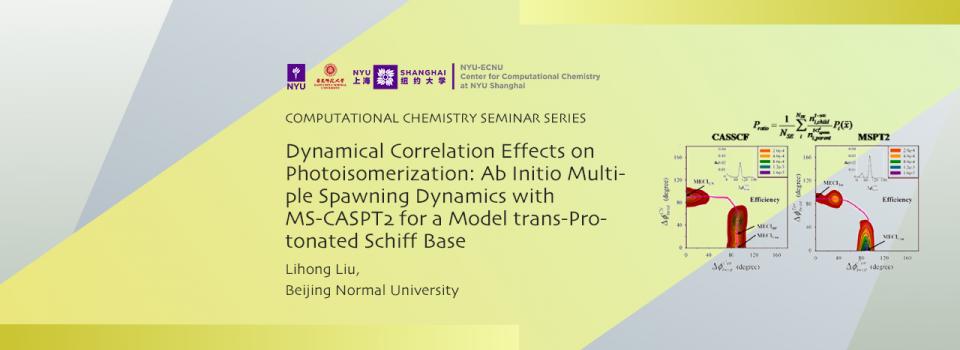
Abstract:
We investigate the photoisomerization of a model retinal protonated Schiff base (trans-PSB3) using ab initio multiple spawning (AIMS) based on multistate second order perturbation theory (MSPT2). Discrepancies between the photodynamical mechanism computed with three-root state-averaged complete active space self-consistent field (SA-3-CASSCF, which does not include dynamic electron correlation effects) and MSPT2 show that dynamic correlation is critical in this photoisomerization reaction. Furthermore, we show that the photodynamics of trans-PSB3 is not well-described by predictions based on minimum energy conical intersections (MECIs) or minimum energy conical intersection (CI) seam paths. Instead, most of the CIs involved in the photoisomerization are far from MECIs and minimum energy CI seam paths. Thus, both dynamical nuclear effects and dynamic electron correlation are critical to understanding the photochemical mechanism.
Biography:
Lihong Liu is an Associate Professor of Chemistry at Beijing Normal University now. She obtained Ph.D. at Beijing Normal University in 2014 supervised by Prof. Wei-Hai Fang, with spending 2 years in Stanford University during 2011-2013 under supervised by Prof. Todd Martinez. After that, he worked at Beijing Normal University since 2014. Her interests are in theoretical and computational photochemistry.
Bi-Weekly Seminar Series by the NYU-ECNU Center for Computational Chemistry at NYU Shanghai


